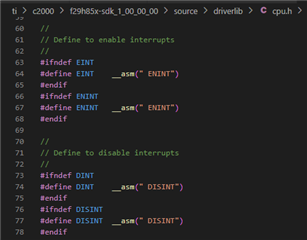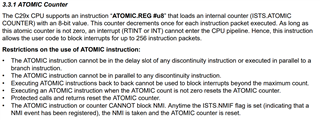Tool/software:
Hello TI Experts,
On C28 devices, I have been using the following functions, implemented in assembly, to disable and restore interrupts around critical sections.
Could you please recommend an equivalent for the C29 devices?
Thank you in advance!
Beat
extern uint16_t DisableInt(void);
extern void RestoreInt(uint16_t Stat0);
_DisableInt:
PUSH ST1
SETC INTM,DBGM
MOV AL, *--SP
LRETR
_RestoreInt:
MOV *SP++, AL
POP ST1
LRETR




